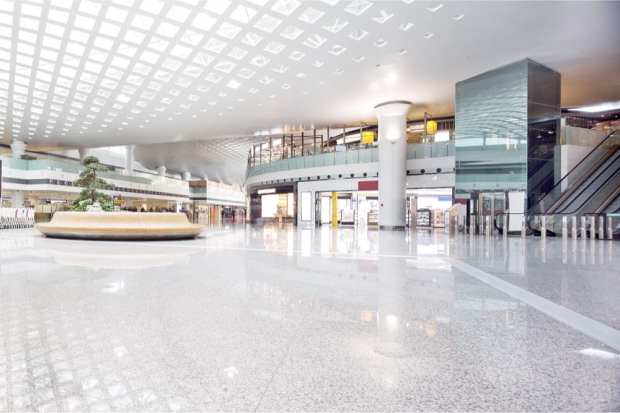Could Experiential Offerings Save The Shopping Mall?

Mall owners are starting to feel the COVID-19 pinch. Taubman is sticking tight to its rent guidelines. Simon Property Group has cut its workforce. As mall owners start to face the reality of the COVID-19 crisis, they and every non-essential retail segment could use some good ideas for the future. Perhaps malls — which were struggling before the coronavirus pandemic — could use them the most. Even in these toughest of times, a University of Maryland professor has taken the issue on and says the current chaos could be a catalyst for change.
“This is another big heavy blow to shopping malls, but it’s also a catalyst,” says Professor of Marketing Jie Zhang at the University of Maryland’s Robert H. Smith School of Business. “Part of it is the public psyche. This virus is likely not going to go away any time soon, and the one type of place where people will be much more vigilant about avoiding in the longer term will be those crowded, enclosed spaces. And that’s exactly what traditional shopping malls are.”
Zhang, who studies consumer behavior and retail strategies, says social distancing will force a shakeup for the U.S. retail sector. Zhang anticipates a “big bounce back,” amid pent-up demand for consumer and leisure activities once the coronavirus crisis is over. “People will want to go out to compensate for this time of missing out,” she says.
However, that judgment is reserved for open-air shopping centers. In a post-pandemic era, people will feel more “ease of mind” in spaces that are not enclosed, she predicts. “For some shopping malls and struggling retailers, this is a very sad story,” Zhang said. “But the coronavirus crisis may also serve as a kind of shock that will force shopping malls to work harder to improve their amenities, so they can survive and thrive. This is consistent with some of the trends that we have been watching in the sector. To attract consumers back, shopping malls will need to beef up their entertainment offerings, their recreational offerings, and their experiential-based-shopping offerings.”
That means offering luxury amenities — higher-end restaurants, virtual dressing rooms high-tech product offerings and other experiences — that entice shoppers to return. That’s the paradox, at least in the short term. What malls do well, she said — apparel, jewelry, wellness products and cosmetics — will not sell well in a downturn. The short term will be difficult for those retailers.
“Those who can weather this storm and survive may have the opportunity to thrive in the future when consumers eventually reach a point where they are ready to indulge themselves,” Zhang said.
Other industry analysts are focused on legal and real estate negotiations as a way for malls to recover when the time comes.
“While that may seem to favor retailers more than landlords, mall owners too have something to gain,” said Bloomberg’s Andrea Felsted. “The pandemic, and the retail shake-out that will inevitably follow, will exacerbate the divergence between the most muscular stores and restaurants and the laggards. It will also polarize the vibrant malls and secondary locations even more. To prosper in this new reality, mall owners will need to ensure they can attract the most desirable brands. The retailers that do emerge from the wreckage will remember how they were treated when the chips were down. On both sides, even-handed negotiations are the best way to help all parties recover, rather than risking bringing about the death of the mall for once and for all.”
